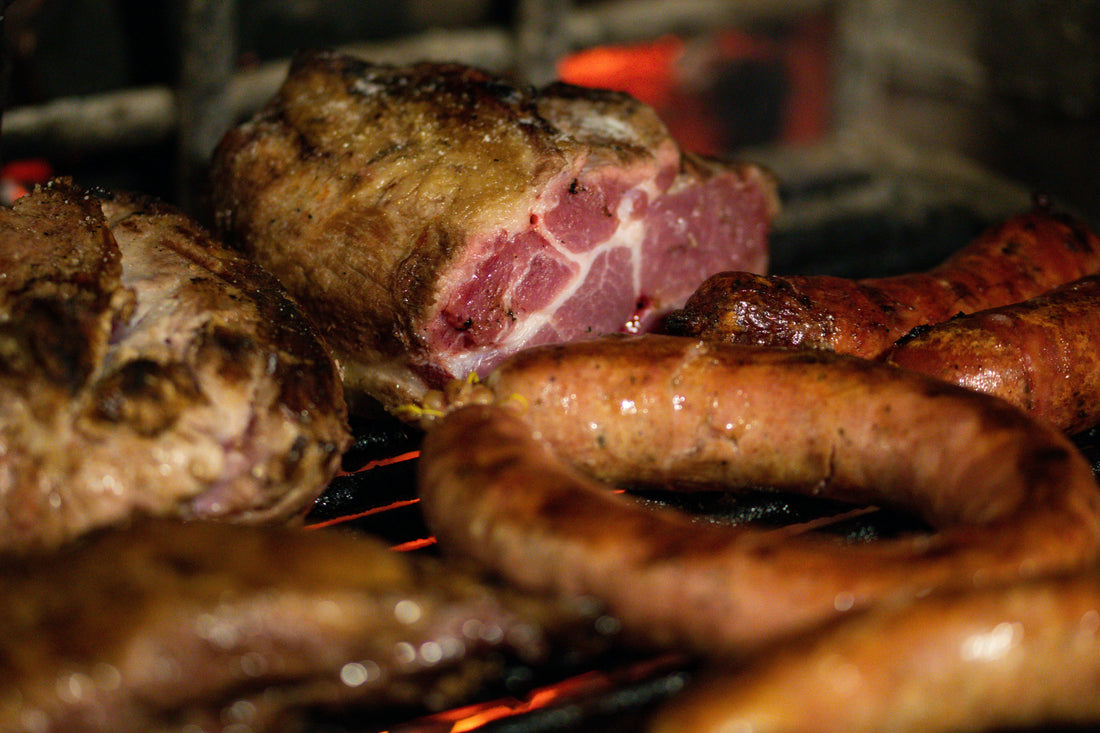
How to Cook Grass-Fed Beef for Tender, Juicy Results
Share
Cooking grass-fed beef can be a game-changer for anyone seeking a flavorful and nutrient-rich meal. However, because grass-fed beef is naturally leaner and has a different fat composition compared to grain-fed beef, it requires some special techniques to ensure it stays tender and juicy. In this post, we’ll break down why grass-fed beef is different, how to adjust your cooking methods, and share tips to create mouthwatering dishes every time.
Why Grass-Fed Beef Is Different
Grass-fed beef comes from cows that graze on grass and forage for their entire lives. This diet results in meat that is leaner, more nutrient-dense, and has a slightly different flavor profile compared to grain-fed beef. Here are some key differences:
-
Leaner Cuts: Grass-fed beef contains less fat overall, which makes it more prone to drying out during cooking.
-
Higher Omega-3s: The fat in grass-fed beef is rich in healthy omega-3 fatty acids.
-
Distinct Flavor: Grass-fed beef often has a more robust, earthy flavor compared to the milder taste of grain-fed beef.
Understanding these differences is the first step to mastering how to cook grass-fed beef properly.
Essential Tips for Cooking Grass-Fed Beef
1. Don’t Overcook It
Since grass-fed beef is leaner, it cooks faster than grain-fed beef. Overcooking can lead to tough, chewy meat. To avoid this, it’s best to aim for medium-rare to medium doneness.
-
Internal Temperatures: Use a meat thermometer to check the temperature.
-
Rare: 120–130°F
-
Medium-Rare: 130–135°F
-
Medium: 135–145°F
2. Marinate for Tenderness
Marinating grass-fed beef can help break down muscle fibers and infuse moisture, making it more tender. Choose marinades that contain an acidic component, such as vinegar, citrus juice, or yogurt, along with flavorful herbs and spices.
Simple Marinade Recipe:
-
¼ cup olive oil
-
2 tablespoons balsamic vinegar
-
1 tablespoon Dijon mustard
-
2 cloves garlic, minced
-
Salt and pepper to taste
Let the beef sit in the marinade for at least 30 minutes to several hours, depending on the cut.
3. Bring to Room Temperature Before Cooking
Before you start cooking, let the beef sit at room temperature for about 20–30 minutes. This helps it cook more evenly and prevents the exterior from overcooking while the inside remains underdone.
4. Use High Heat for Quick Searing
For steaks and thinner cuts, a quick sear over high heat locks in juices and enhances flavor. Heat your skillet or grill until it’s very hot, add a bit of oil, and sear each side for 2–4 minutes depending on thickness.
5. Cook Low and Slow for Tougher Cuts
For roasts and other tougher cuts, a low and slow cooking method is best. Braising—cooking the meat in a small amount of liquid over low heat—is an excellent way to keep grass-fed beef moist and tender.
6. Rest the Meat After Cooking
Let the meat rest for 5–10 minutes after cooking. This allows the juices to redistribute throughout the meat, making it more flavorful and tender.
Cooking Techniques for Different Cuts
Steaks (Ribeye, Sirloin, Strip)
-
Best Cooking Method: High-heat searing followed by finishing in the oven (if needed).
-
Pro Tip: Brush the steak with a bit of oil and season simply with salt and pepper. Avoid heavy seasonings that overpower the natural flavor.
Ground Beef (Burgers)
-
Best Cooking Method: Pan-frying or grilling over medium heat.
-
Pro Tip: Since grass-fed ground beef is leaner, adding a binder (like an egg) or mixing in some fat (like bacon) can help keep burgers juicy.
Roasts (Chuck, Rump)
-
Best Cooking Method: Braising or slow cooking.
-
Pro Tip: Use beef broth, red wine, or a combination as the liquid for braising to enhance flavor.
Short Ribs and Brisket
-
Best Cooking Method: Slow cooking or smoking.
-
Pro Tip: Cook these cuts low and slow with plenty of liquid to achieve a fall-apart texture.
Flavor Pairings for Grass-Fed Beef
Grass-fed beef pairs well with simple, natural flavors that complement its rich, earthy taste. Try these combinations:
-
Herbs: Rosemary, thyme, and sage
-
Spices: Black pepper, paprika, and garlic
-
Acids: Balsamic vinegar, lemon juice, and red wine
-
Vegetables: Root vegetables like carrots, potatoes, and onions
Common Mistakes to Avoid
-
Overcooking: Always keep an eye on the temperature to avoid drying out the meat.
-
Skipping the Resting Step: Resting allows juices to settle, making the meat more flavorful.
-
Cooking Straight from the Fridge: Cold beef doesn’t cook evenly, so always bring it to room temperature.
-
Not Using a Thermometer: Guesswork can lead to disappointment—a meat thermometer is your best friend.
Final Thoughts
Cooking grass-fed beef may take a bit of adjustment, but the results are well worth it. By following these tips and techniques, you can enjoy tender, juicy, and flavorful meals that showcase the best of this naturally raised beef. Whether you’re grilling steaks, braising roasts, or pan-frying burgers, grass-fed beef delivers delicious results when treated with care.
Happy cooking and enjoy your next beef box creation!

